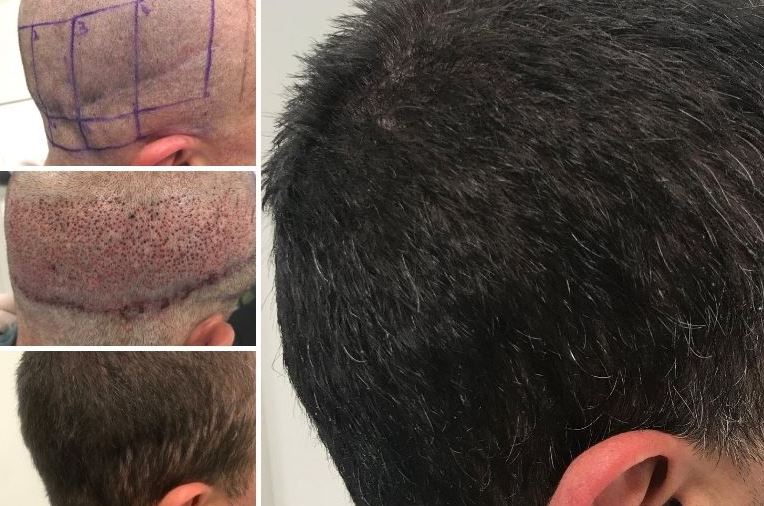Individuals who experience scarring after a hair transplant procedure, ranging from minor to severe, have options available to them for successfully covering the scars. The use of scalp micropigmentation is an excellent way to cover up head scars for those who have undergone a hair transplant, no matter how severe the scarring is. Additionally, this can add to the appearance of having a fuller head of hair.
Scalp micropigmentation is a process that can help cover up scars on the head by injecting small amounts of pigment underneath the scalp in a series of dots. With the help of a computer system, a natural hairline is created and dots are placed carefully so that, once the procedure is over, the individual’s scalp will look like that of someone who has just started to re-grow their hair after shaving or buzzing their head.
Those with some natural hair growth can use scalp micropigmentation to fill in and create the look of thicker hair in areas where hair loss or thinning is occurring. Scalp micropigmentation is commonly used by those experiencing hair loss as a way to project the image of a full head of hair before undergoing a hair transplant.
Scalp micropigmentation can also be employed after a hair transplant, as mentioned previously, to help fill in any thin areas and to disguise any scarring. The process of scalp micropigmentation for the purpose of scalp concealment is slightly different from the standard procedure used to treat conditions such as male pattern baldness or alopecia.
Because scars are made of thick layers of tissue which do not always absorb pigment the same way a thin section of scalp would, those receiving scalp micropigmentation may have to come back for a few more sessions. This is so we can be certain that the pigment is the right color and depth to create the desired effect.
Furthermore, the amount of scalp micropigmentation necessary for a scar treatment will be unique to each individual.
To help the scar blend in with the natural hair growth and hair pattern, we must apply the scalp micropigmentation not only to the scar, but also the areas above, below, and to either side of it. If you’re not happy with how much hair you have after a transplant, we can provide full scalp coverage. This will help improve the appearance of your existing hair and give you a more consistent look. You’ll feel better about your appearance and be more confident as a result.

